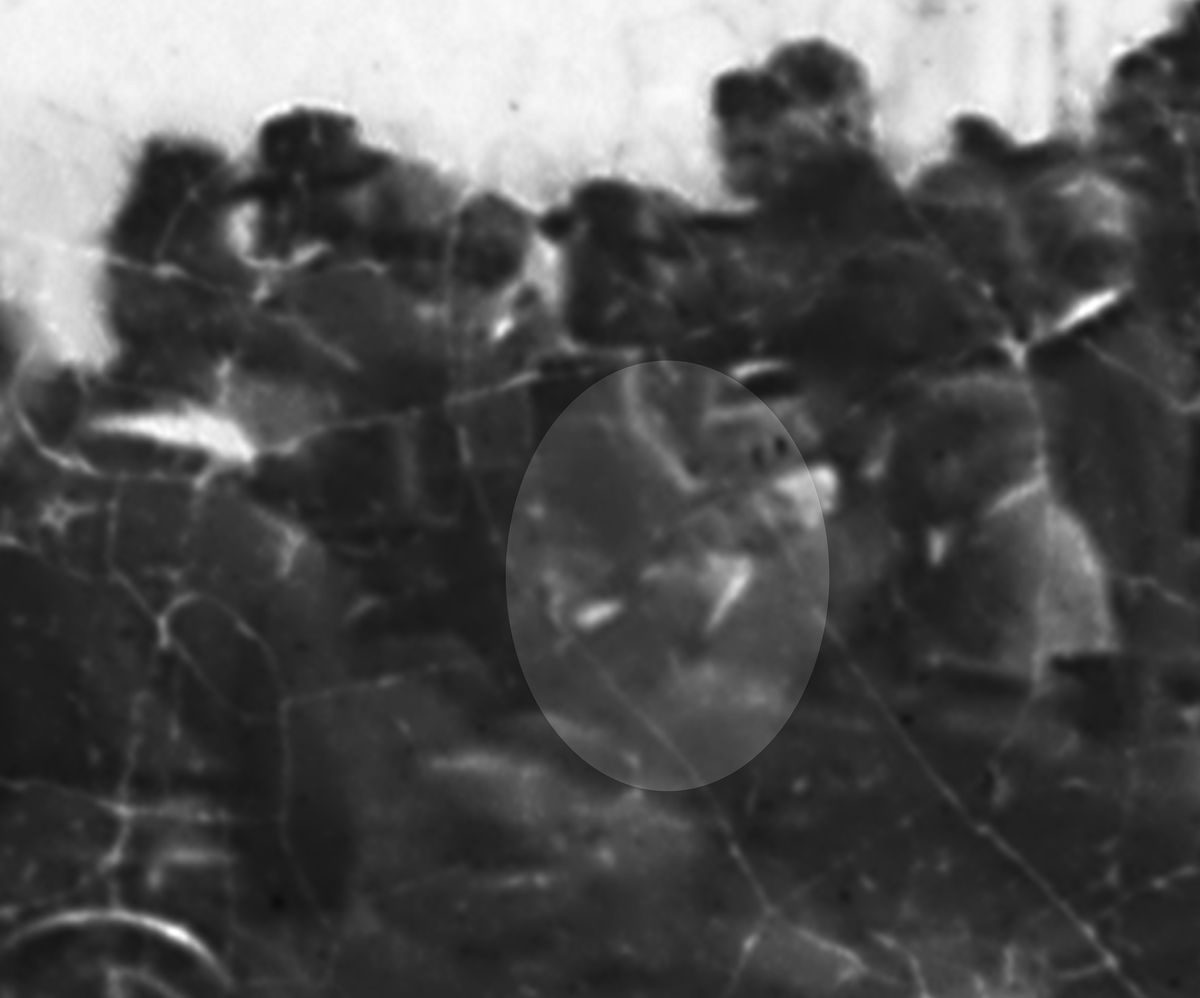Is It Really Lincoln? Gettsyburg Photo Stirs Debate

In 1863, President Abraham Lincoln stirred the soul of an embattled nation with the famous speech he delivered in Gettysburg, Pa. And now, 150 years later, Lincoln has again aroused passions by being spotted — possibly — in a stereoscopic photograph taken on the day of the Gettysburg Address.
But is Abe Lincoln really in the photo? And, if so, which of two images of a bearded man in a black stovepipe hat is Lincoln? These questions have set off a dustup in the normally staid world of archival photography, according to Smithsonian magazine.
Six years ago, John Richter, an amateur historian and director of the Center for Civil War Photography, magnified a stereograph taken by photographer Alexander Gardner on the day of Lincoln's now-famous Gettysburg speech. Richter identified a tall figure on horseback, wearing a stovepipe hat and saluting the troops, as the 16th U.S. president. [Lincoln to Reagan: Top 10 Ailing Presidents]
Richter's finding was celebrated as a rare gem of a photo, since only one other image of Lincoln is known to exist from that fateful day. But ever since the finding was announced, skeptics questioned the veracity of the supposed Lincoln photo.
"For starters, the guy on the horse looks like a Cossack. His beard is longer and much fuller than the wispy, trimmed one the president wore in his studio session with Gardner 11 days before," William Frassanito, a historian and author of "Gettysburg: A Journey in Time" (Thomas Publications, 1996) told Smithsonian. "Lincoln had an unmistakable gap between his goatee and his sideburns. If you're going to spy him in a black speck in a distant background, at least get the beard right."
Earlier this year, Christopher Oakley — a former Disney animator and Civil War buff — was working on a 3D animation of Honest Abe as part of his Virtual Lincoln Project, a student collaboration. (Oakley also teaches new media at the University of North Carolina-Asheville.)
While examining Gardner's stereograph, Oakley wondered if the Library of Congress (which owns the image) had ever created a high-resolution copy of the photo's left-sided negative. They hadn't, but would do so for $73. "It's the best $73 I ever spent," Oakley told USA Today. "As soon as I had that [negative] in my hands, I was able to look at it much more clearly."
Sign up for the Live Science daily newsletter now
Get the world’s most fascinating discoveries delivered straight to your inbox.
Oakley's investigation found two critical images in the enhanced stereograph. First, the man Richter and others assumed to be Lincoln was wearing a coat with military-style epaulets on the shoulders. Lincoln is known to have been wearing a plain overcoat that day.
And perhaps even more important, Oakley identified a man with a trimmed beard and stovepipe hat standing precisely where Lincoln would have stood, near a man Oakley determined to be then-Secretary of State William Seward, who was on the speaker's platform. "All the landmarks — jawline, beard, hair, cheekbones, heavy brow, ears — line up perfectly," Oakley told Smithsonian.
But Oakley's findings don't sit well with all historians, namely Richter. "The man I found had to be Lincoln," Richter told Smithsonian. "Who else might have been returning a salute but the commander in chief?"
Actually, other experts have noted that it's unlikely Lincoln would have saluted the troops, since Ronald Reagan is acknowledged as the first U.S. president to have done so, in 1981 — a notable break with presidential protocol.
And the prominent figure on horseback wearing epaulets? Probably a uniformed member of the Independent Order of Odd Fellows, hundreds of whom were in attendance that day. "The fraternal order assigned its own marshals to the ceremony," Frassanito told Smithsonian. "No one knows what their uniforms looked like," but the mounted man was likely an Odd Fellows official or some other marshal in a military-style coat, he added.
Follow Marc Lallanilla on Twitter and Google+. Follow us @livescience, Facebook & Google+. Original article on LiveScience.












